Fast, Gentle Treatment of Tongue-Ties and Lip-Ties
A small percentage of people — estimated between 4% and 15% — are born with what are called tethered oral tissues. This means a short, tight membrane of tissues connects, or tethers, the tongue or lip in such a way that it inhibits natural movement. If left untreated, this can cause problems with speech, function and a myriad of other concerns as serious as sleep apnea. A much larger percentage of people, however, have posterior tongue-ties and have learned to compensate with other muscles instead of the tongue. Therefore, most are not even aware of it. At Arlington Smile Center, Dr. Roca uses a LightScalpel® CO2 laser to sever this tight tissue with little to no bleeding and little to no pain. This can be done for patients of any age, from newborns through to adults. Before she can release your tongue- or lip-tie, she needs you to spend a good month strengthening your tongue in order to get your best results from the tongue-tie release. After the release, you are required to continue the oral myology she teaches you, to prevent the tongue-tie from reattaching.
Dr. Roca received her tongue- and lip-tie training directly from Dr. Richard Baxter, the renowned speaker and author of “Tongue-Tied: How a Tiny String Under the Tongue Impacts Nursing, Speech, Feeding, and More”. She was one of three doctors who spent the day training under him as he did several lip- and tongue-ties on newborns and kids of all ages.

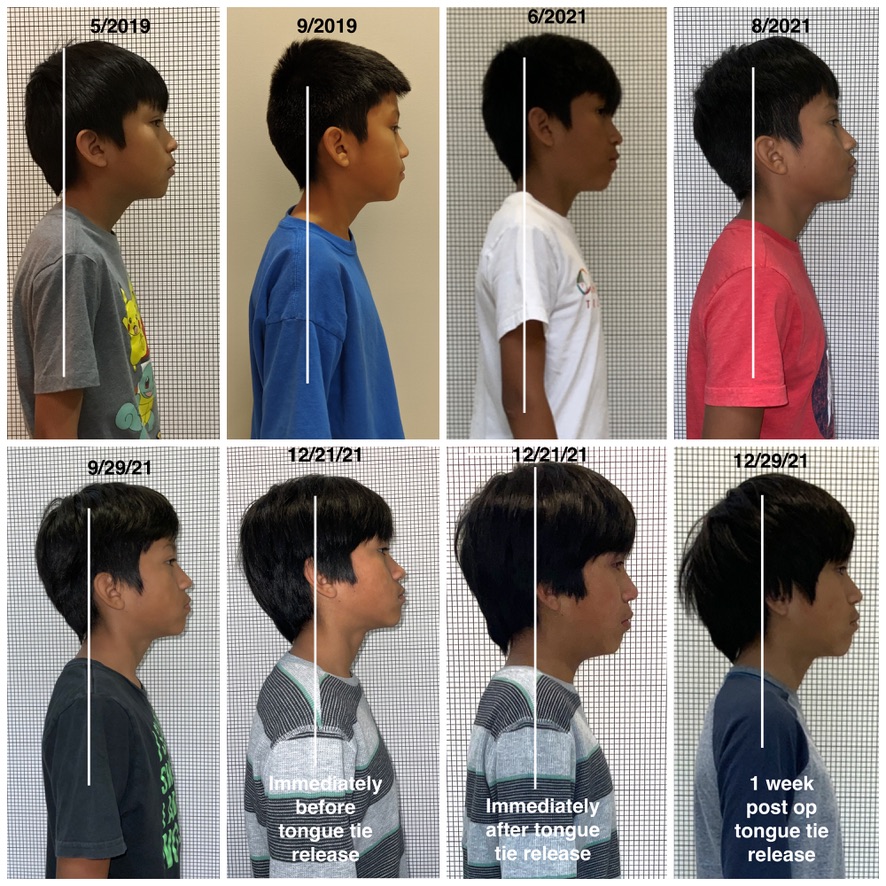
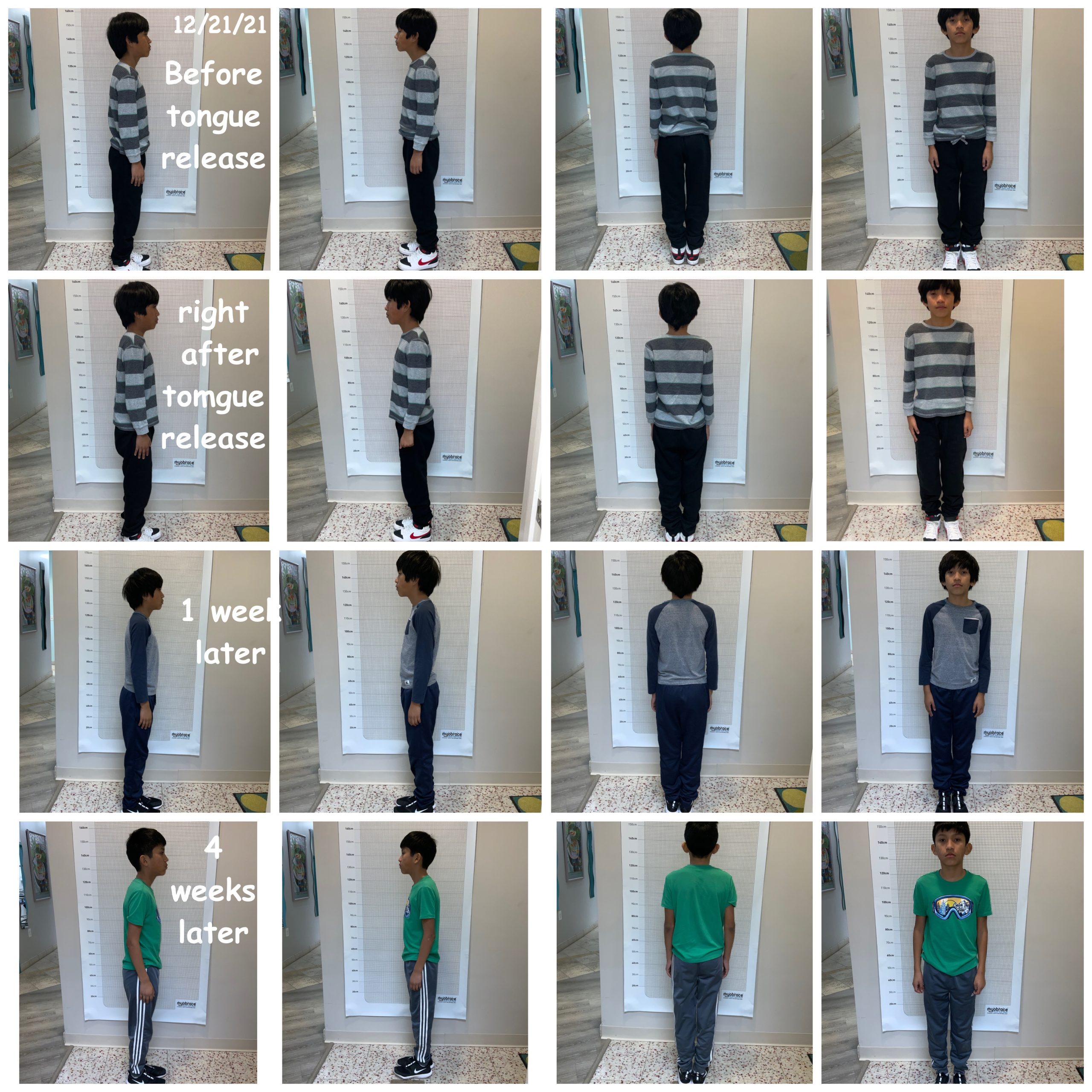
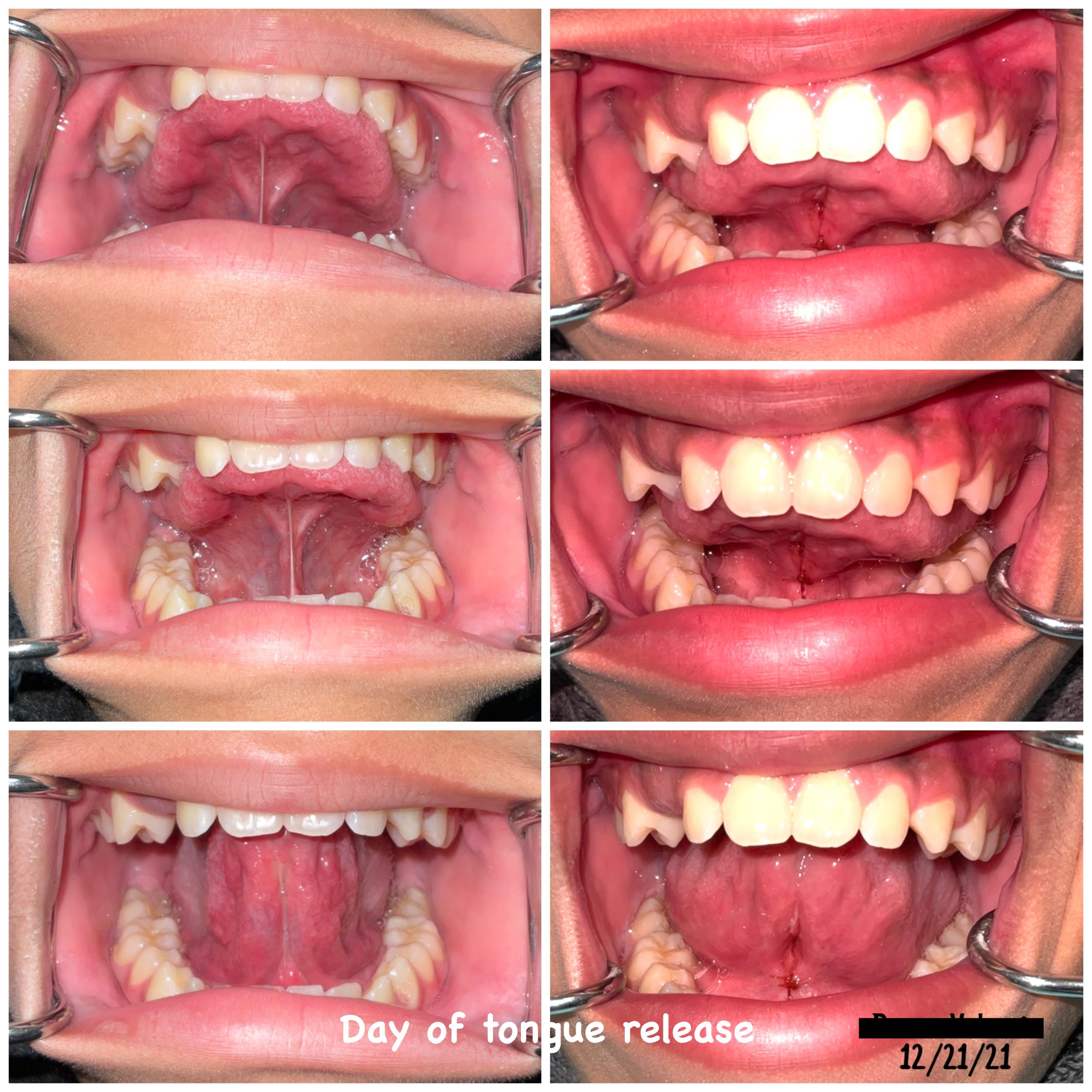
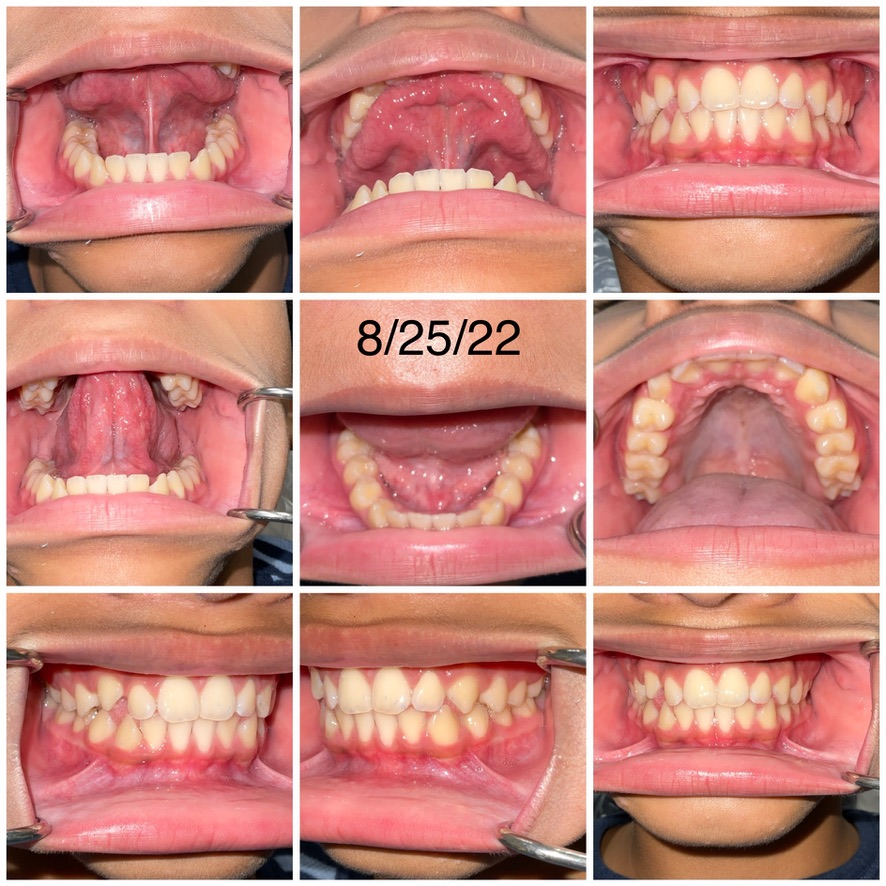

Super tight and skinny frenum you can barely see in the middle of the tongue. 05/30/2019

Patient came in for five-month check-up. We showed her how tight the frenum was again and the scar tissue that was forming, a thick white line down center and down the sides. 10/15/2019

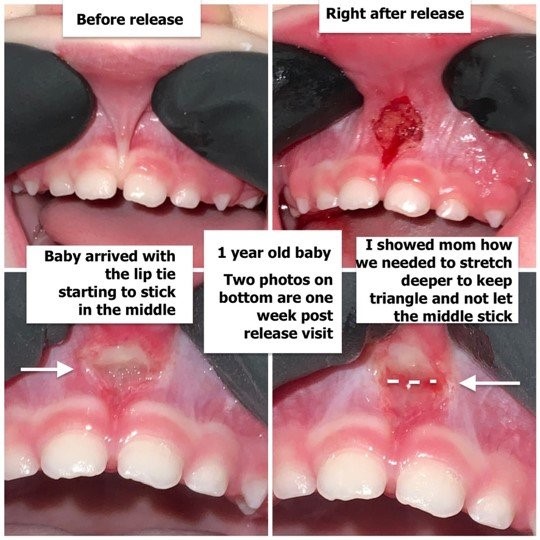
This is an example of one of our lip-tie releases. This is how we show the parents that we need more stretching and why the one week post op is so crucial to avoid reattachment.
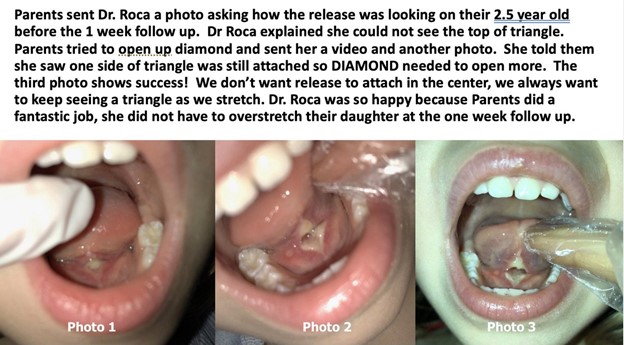


What exactly is a tongue-tie?
The lingual frenulum is a small fold of mucous membrane that extends from the floor of the mouth to the midline of the underside of the tongue. Find your own lingual frenulum by looking in the mirror, opening your mouth, and stretching your tongue towards the palate. See the whitish cord beneath your tongue? Ankyloglossia, or tongue-tie, is simply a lingual frenulum that is tight enough to restrict the movement of the tongue. It is a congenital oral anomaly caused by an unusually thick, or unusually short, lingual frenulum.
How often does a tongue-tie accompany a lip-tie?
In our experience, in over 90% of cases, but depending on the age, we will usually not recommend doing both the same day.
Is there always a posterior tie behind an anterior?
Yes. The real restriction of a tongue-tie is typically at the posterior component.
Can a tongue-tie cause speech problems?
Absolutely. The most common letters affected are R, S, L, Z, D, CH, TH, and SH, but other sounds are also difficult. While some kids can make these sounds in isolation, stringing the sounds together during speech can be very difficult. Recent studies have shown some improvement in speech function following a frenotomy. Dr. Roca feels that speech can be improved in specific cases where restriction is prominent and the child has had speech therapy and improvement hasn’t been noted. As more studies are done, she believes we will see an improvement in objective speech measures with the procedure, but not every patient will benefit. Most children will learn to compensate their tongue muscles, learn to say all words and never realize they were tongue-tied until they are released.
Can a lip-tie cause speech problems?
Generally, Dr. Roca says no. In some severe cases, if the lip-tie is causing the child some discomfort with mouth opening (because of tension), they may alter their oral anatomy to minimize pain, which could impact speech. Also, if the lip tie is causing a space between the front teeth, it is possible that the air is moving through the space, causing a lisp.
Do lip-ties cause tooth decay?
Yes. The most affected are the two teeth on either side of the upper lip-tie (the incisors). Cavities on the teeth in the back (molars) typically happen in the setting of tongue-tie (can’t sweep the tongue back there to clean). Dr. Kotlow has a great article describing the impact of a lip-tie on cavities.
What happens if you don’t address the tongue-tie as a child? Can it affect an adult?
Yes, indeed it can. Untreated tongue ties in infants can lead to difficulty chewing and swallowing firmer foods, altered jaw and dental development including a high palate and narrow facial structure, poor sleep patterns, mouth breathing, and increased gas and bloating resulting from poor tongue coordination and corresponding swallowing of air. Significant ties may result in delayed speech development due to the tongue being restricted in movement. Also, when tongue movement is restricted, the tongue cannot sweep across tooth surfaces and spread saliva, both of which are crucial to oral cleansing, which is why we see more decay in tongue-tied patients. If you have a posterior tongue-tie, you are most likely using the floor of your mouth, which is causing neck and shoulder tension. Not to mention the fact that if you are tongue-tied, you are most likely not getting enough deep sleep, which leads to memory issues as an adult from your mouth being open and not getting enough oxygen to your brain.
What can you expect to happen after the procedure?
Typically there is a healing period that your child must undergo before the full benefits are realized. We teach each mother proper active wound management and daily stretching exercises in order to facilitate healing. Post-treatment follow-up is just as important as pre-treatment care.
My child’s tongue-tie was released before, but I don’t think it was released enough. Is it possible that the child needs the tongue-tie released again?
Yes, often we release tongue-ties on children that have been released as many as four times. Scar tissue can grow back if not stretched correctly post-op and for the weeks following the release. Arlington Smile Center sees all releases one week post-op to make sure the membrane is not starting to reattach.
In Dr. Roca’s clinical experience, even if your child is 2+ years old, have immature gag reflex, and are struggling with chewing hard solids, mouth breathing, etc., starting with chewy tube and age appropriate myofunctional therapy exercises along with encouraging parents to familiarize themselves with improving gut health and body work have proven to be the most successful and stress free way for parents to help their children develop correct oral mouth posture and nose breathing.
No one needs to live with the difficulties of tongue-ties and lip-ties. Call 703-237-7622 now to schedule a visit to see how we can help you or your child.
